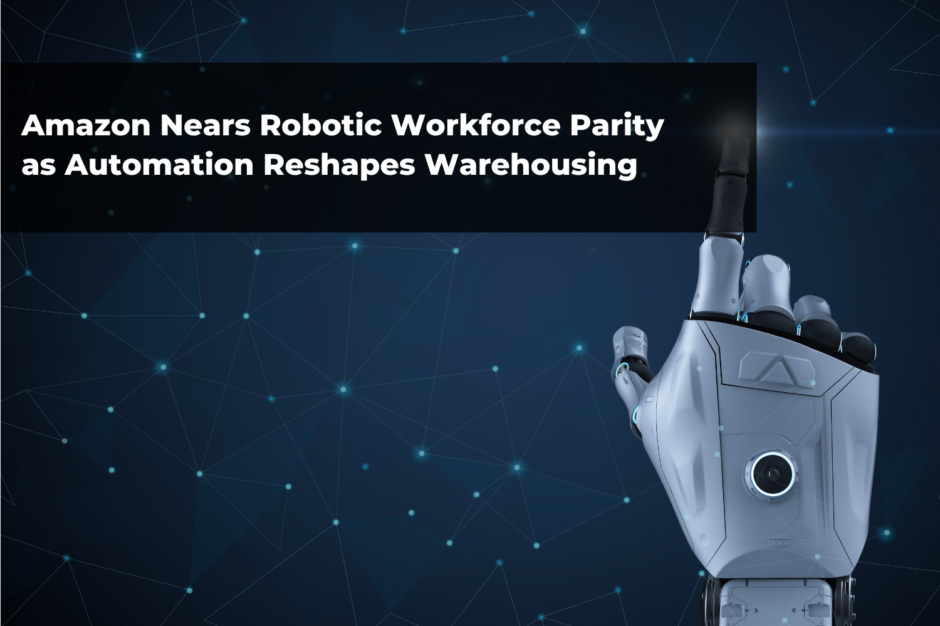Amazon Nears Robotic Workforce Parity as Automation Reshapes Warehousing
CREtech

Thanks for keeping up with the CREtech Community in the News! For more news about members of the CREtech Community, follow us on Linkedin.
Amazon’s warehouse operations are rapidly approaching a major inflection point: the number of robots now deployed in its facilities—over one million—nearly matches the number of human workers. This milestone is the result of more than a decade of investment in robotics and automation, including the 2012 acquisition of Kiva Systems. The company reports that approximately 75% of its global deliveries now involve robotic assistance, with robots performing tasks such as picking, sorting, lifting, and packaging.
Recent innovations include Vulcan, a robot with a sense of touch capable of autonomous item picking, and increased integration between AI systems and robotics to improve coordination. Many Amazon fulfillment centers now feature robotic arms and autonomous mobile robots that perform physically demanding and repetitive tasks, reducing the need for manual labor and improving safety and productivity.
While some jobs are being displaced, the shift is also opening up new, higher-skilled roles for existing employees. Workers like Neisha Cruz, who started out as a picker, have been retrained to manage and monitor fleets of warehouse robots remotely—resulting in significantly higher wages and a change in job responsibilities.
The rise of automation has led to leaner warehouse staffing. Amazon’s average number of employees per facility is now at its lowest in 16 years, while its per-employee package throughput has risen sharply. AI is also being deployed to optimize inventory placement, demand forecasting, and robot efficiency, a move that CEO Andy Jassy says will support long-term workforce reductions.
As the second-largest private employer in the U.S., Amazon’s approach signals a broader transformation across the logistics and warehousing industry. Its Shreveport, Louisiana facility exemplifies this shift, where more than six dozen robotic arms and fleets of machines now handle millions of items with minimal human intervention. The company’s strategy demonstrates how advanced robotics, combined with artificial intelligence, are redefining what warehouse work looks like at scale.

